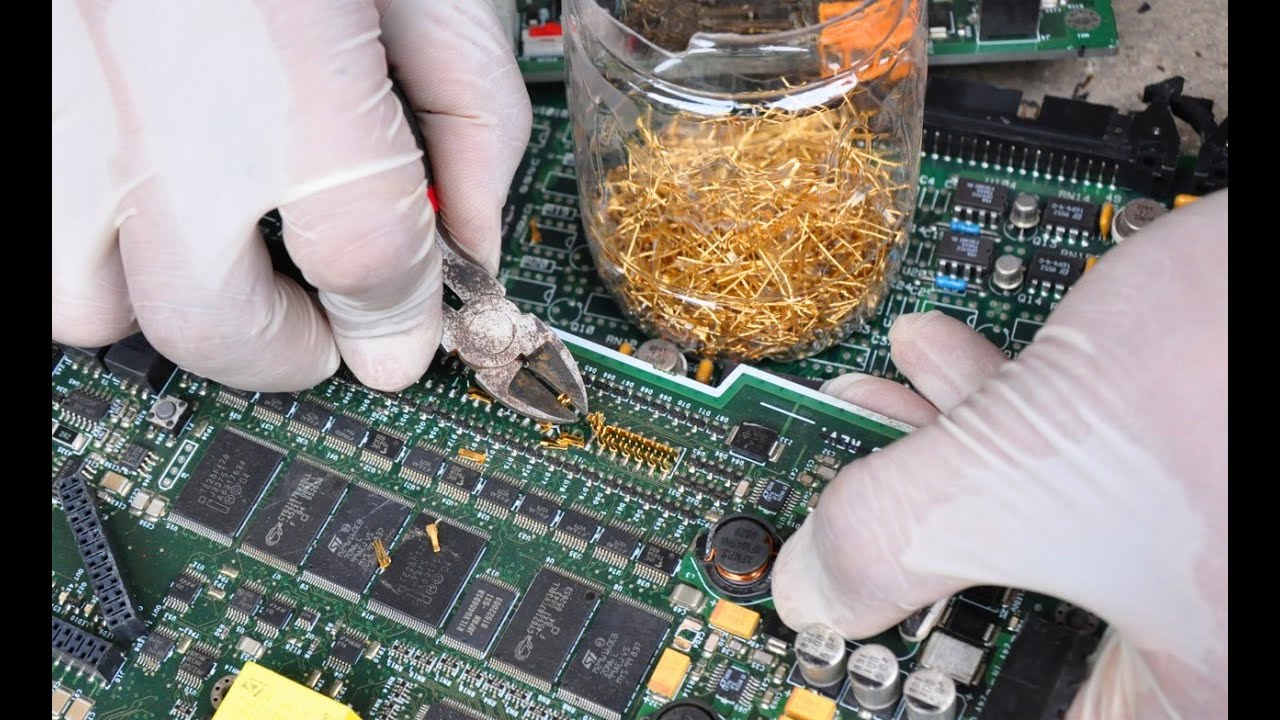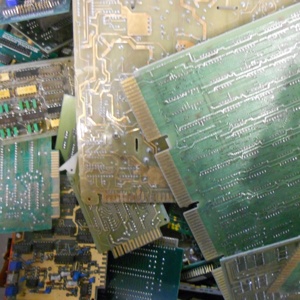Extracting Value: Uncovering Gold in Computer Components
Introduction
In our technology-driven world, it's easy to forget that many of our high-tech devices contain traditional precious metals. Yes, we are talking about gold. It serves pivotal roles in computer components due to unique properties. Curious to know more? Here is a detailed guide on uncovering the hidden gold in computer components.
What is the Connection Between Gold and Technology?
Gold, a valuable and treasured element, holds a significant place in our technological devices because of its several noteworthy properties. Unraveling the connection between gold and technology opens up the fascinating world of precious metals' use in advanced electronics:
- Conductivity: Gold is renowned for its excellent electrical conductivity, which is much needed in high-tech devices. This allows smooth transmission of electric current providing faster and efficient functionality.
- Corrosion Resistance: This property of gold makes it an excellent material for developing long-lasting and durable electronic devices. Among metals, Gold's resistance to air, water, and many chemical reactions makes it stand out.
- Malleability: Gold is incredibly malleable - it can be thin enough to be transparent yet retain its richness and conductivity. This makes it a perfect element for components that require precise formations at a nano-scale.
In the realm of computer technology, with a focus on performance and durability, Gold has found its pivotal niche.
Where Can We Find Gold in Computer Components?
Identifying where gold is situated within computer components can provide intriguing insights into technology manufacturing. Let's explore the components that store this precious metal and understand the reason behind its usage.
Computer Components Containing Gold
A wide variety of components within a computer serve as gold's repository. Some of these include:
- The Motherboard: As the central hub of a computer, the motherboard is an excellent source of gold. It features gold in its chips, capacitors, and several of its inner layers.
- Connector Pins: Peripheral Component Interconnect (PCI) Express, memory sticks, and Universal Serial Bus (USB) ports, all contain connector pins which are gold-plated.
- RAM (Random Access Memory): Gold is also incorporated into the chips of the RAM modules.

Reasons for Gold Usage in Components
Gold is used in these components due to unique features it carries. These include:
- Superior electrical conductivity: Gold's excellent conductivity capabilities make it ideal for rapid data transfer, an essential feature for modern, high-performance computers.
- Resistance to corrosion: Gold effectively resists corrosion, ensuring that the system’s connections remain stable and secure for a prolonged period, reducing the risk of system failures.

- High malleability: Gold's property of being highly malleable allows the formation of components at the nano-scale with extreme precision.
In essence, the presence of gold is not just ornamental but performs a crucial function in ensuring the high-speed, durable and efficient performance we have come to expect from our technology.
How is Gold Extracted from Computer Components?
Extracting gold from computer components is a fascinating process which involves various methods. Here is a more detailed description:
- Leaching Method: This method primarily involves the immersion of computer components into acid solutions that dissolve the metal. The gold is then precipitated out of the solution.
- Pyrolysis Method: Pyrolysis is a thermochemical treatment, which employs high temperatures exceeding 430 degrees Celsius. Under immense heat, the computer component decomposes, leaving behind a metallic residue that contains gold for further refinement.
These methods are effective, but they do require a degree of expertise and caution due to the use of potentially hazardous chemicals in the process.
In terms of efficiency:
- Leaching tends to recover approximately 95% of the gold present in electronic waste.
- Pyrolysis, on the other hand, offers a lower yield, recovering around 85% of the gold.
While these recovery rates can vary depending on many factors, such as the exact composition of the waste, it is clear that significant amounts of gold can be extracted from our discarded technology. As we continue to refine these methods, we increase the sustainability of our gold supply chain while reducing the environmental impact of traditional mining.
What Role Does E-Waste Recycling Play in Gold Extraction?
Understanding the impact of e-waste recycling on gold extraction requires diving deep into its advantages, procedures, and the ensuing benefits. This sustainable process transforms old computer components into a modern-day gold mine with less environmental harm.
- Eco-friendly Resource Management: E-waste recycling drastically cuts down the environmental impact of conventional gold mining and processing methods. It offers an alternative means to obtain valuable metals, reducing destructive mining practices and encouraging sustainable resource utilization.
- Procedure of Gold Recovery: The extraction process typically involves mechanical processing, separation, and purification techniques. Initially, e-waste is mechanically processed to reduce size and enhance liberation. It is then subjected to separation processes to obtain a concentrated metal-rich fraction. Finally, the gold is purified using hydrometallurgical or pyrometallurgical methods.
- Potential Gold Reserves: Reports suggest that massive amounts of gold are thrown away each year in electronic waste. As per the Global e-Waste Monitor 2020, about 53.6 million metric tons of e-waste was generated worldwide, indicating an untapped potential for gold recovery.
- Benefit to Economy: Besides the environmental advantages, e-waste recycling also contributes enormously to the economy. It produces a lucrative supply chain, creating job opportunities and triggering economic growth.
In conclusion, e-waste recycling plays an indispensable role in extracting gold from computer components. It's an eco-friendly, profitable, and smart approach to resource management in the digital age.
Conclusion
E-waste recycling plays a significant part in extracting gold from computer components. Witt proper recycling methods, significant amounts of gold can be recovered from old computers, reducing the overall environmental impact of mining. Moreover, it provides a sustainable gold supply chain and promotes a circular economy.
Related FAQs about what computer components contain gold
How much gold can be extracted from computer components?
It varies widely depending on the age and type of the computer in question. On average, it's reported that there's around 0.2 grams of gold in an average desktop computer, mostly found on motherboard connectors, extension cards, and the CPU.
Is it cost-effective to extract gold from old computers?
It can be cost-effective, but it largely depends on the scale of operations and capital investment. The process requires specific equipment and knowledge, making it more feasible for recycling companies. For individual consumers, the cost may outweigh the benefits.
How can e-waste recycling benefit the environment and economy?
E-waste recycling can reduce the need for new mining, conserving natural resources. It decreases electronic waste in landfills, which helps decrease environmental pollution. Economically, it creates jobs in the recycling industry and offers a sustainable way to extract valuable materials.


